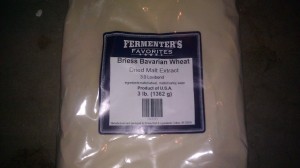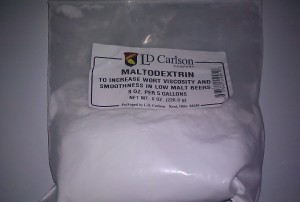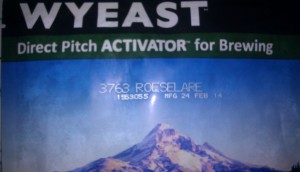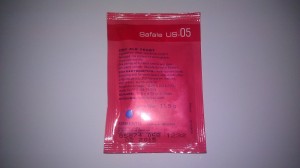After a long period of time of no brewing, I finally got off the schnide and had myself a lambic brew day. The recipe I followed was the one I posted a few months ago.
Scheduling has been an issue over the past few weekends. Plans were made and there was no time for brewing beer. Even with this extract brew, which takes much less time to complete, I didn’t have the free window to get it done.
All right – enough of this pathetic explanation of lack of brewing, let’s get to the details of the session.
Sometimes, it’s nice to light up the kettle and get to the boil. With all the extra steps with all grain brewing with heating up water for the mash and rinsing grains, it’s nice to rock the one kettle and focus on the brew part of brewing beer.
I believe this session was the first time I have used wheat malt extract. All the other recipes that called for wheat, I mash it with the other grains. Here’s a photo of the extract I used.
It tasted pretty good. It wasn’t as sweet as the malt extract. The boil went fine without any issues – no bad boil overs or other random silliness that can happen during a brew day. I added some maltodextrin since I read that it gives the brettanomyces something to chew on once the primary fermentation is over.
I pitched the Roeselare blend from Wyeast without making a starter. I smacked the pack and pitched it.
You can see that manufacture date on the packet. It’s a little long in the tooth but not too bad, right? It should do the trick.
I put in some clean ale yeast as well to make sure I got the gravity down to where it needs to be. I did proof this dry yeast.
And now we wait. This is my first sour beer so we’ll have to see how it comes out. There’s a bunch of information about how much oxygen should get in while the beer is fermenting and conditioning. The pressure is on to make an excellent lambic. Shouldn’t I relax?





1 Pingback